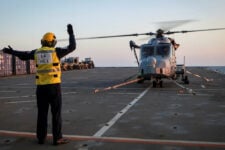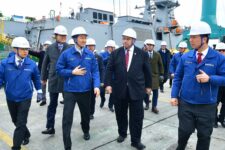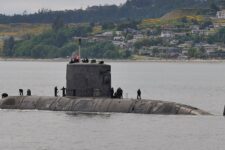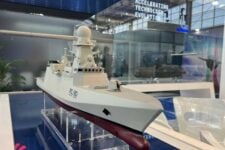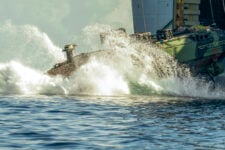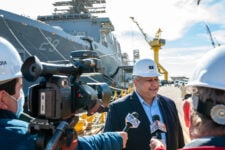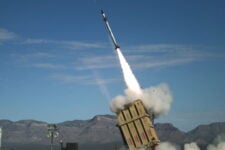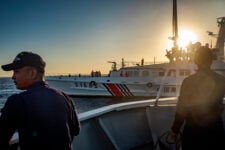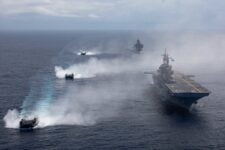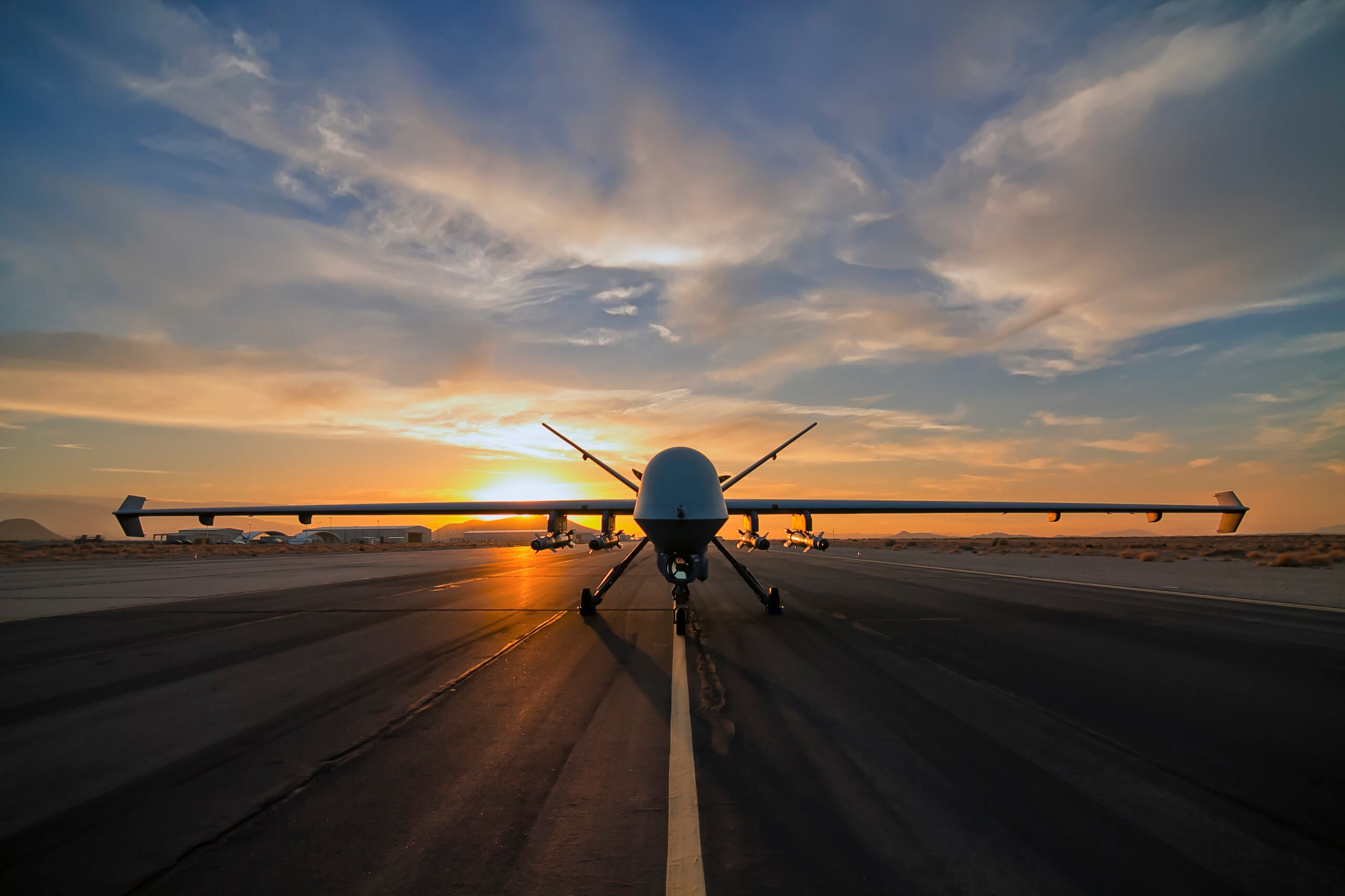
GA-ASI’s MQ-9A UAS delivers long-endurance, persistent ISR for the Marine Air-Ground Task Force.
The U.S. Marine Corps is gaining speed as it continues to execute one of the most significant transformations in military history.
The Marine Corps, as its leaders often observe, is whatever the United States needs it to be. Marines have fought from the rigging and foretops of sailing ships, from the black sands of the Pacific, and in the moonscape deserts of Western Iraq — to name a few.
In each era, the equipment required for the forces of the moment was different. Sometimes the Marines have gone in heavy, with armored vehicles or even tanks. Today’s Marine Corps is going expeditionary, light even compared to traditional Marine standards. That means setting aside many old weapons, doctrines, and equipment that don’t contribute to the mission and focusing on those that do.
One key current example is with unmanned aerial systems, or UAS. The Marines are among the newest, but also the most eager, adopters of the MQ-9A UAS, which serves as the keystone for the novel doctrines of the Marine Air-Ground Task Force.
Marines need to be able to move swiftly into and within contested areas, either to seize or hold key assets such as islands or use them to affect the surrounding air or maritime battlespace. In the event of a conflict with a sophisticated adversary, a small unit of Marines might need to assault a strategic ocean outpost, defeat any defenders who might be occupying it, and then set up surface-to-surface weapons to be able to threaten enemy warships in the area, support friendly flight operations, and more.
Central to achieving this vision is intelligence, surveillance, and reconnaissance: Marines must ensure the area is safe and have a broad understanding about what’s happening throughout their environment. That’s where the MQ-9A comes in.
Its ability to stay aloft for a day or more, in some configurations, means the aircraft can orbit areas of interest, or fly great distances, and soak up intelligence and domain awareness unlike any other previous Marine Corps aircraft. In a crisis, the MQ-9A might hold custody of a target such as a suspicious ship, relaying its precise location in case it needed attention from armed Marine units if the situation escalated to a conflict. Or the aircraft might provide early warning to the joint force about the approach of hostile units. The options are endless.
Building the new approach
The Marine Corps has adopted the MQ-9A with enthusiasm, but also with its traditional openness and agility. Marine Corps pilots have worked with U.S. Air Force and U.S. Air National Guard units that operate other versions of the MQ-9A to learn as much as practical — but they’re writing their own story as they go.
“Marine Corps aviation is pushing the boundaries of what has been done in the past, and it is simply amazing,” said Maj. Shane R. Gentry, an MQ-9A pilot with Marine Unmanned Aerial Vehicle Squadron (VMU) 3.
Gentry was selected as the Marine Corps aviator of the year and has been helping lead the way in the service’s adoption of its new large unmanned aerial system.
One distinction he observed was that the Marine Corps’ doctrine contemplates using the MQ-9A much more for wide-area surveillance, communications, and information sharing than some of the prior uses by the Air Force or other units.
A light composite structure, long wings, economical fuel burn, and a suite of sophisticated onboard sensors and other instruments make MQ-9 aircraft ideal for this.
SkyGuardian® and SeaGuardian®
The larger, newer MQ-9B SkyGuardian and SeaGuardian take these capabilities to the next level. They have many additional built-in features not available on the earlier-model MQ-9A. One is better all-weather resilience, including lightning protection and cold weather performance. Another is an even greater wingspan, which enables a further diversity of airfields from which the aircraft can operate.
In an operating environment such as the U.S. Indo-Pacific Command, the Marine Corps and its joint force partners, as well as international allies, need as many places to take off and land as possible. MQ-9B’s high versatility, automated takeoff and landing capability, and other features mean the aircraft can exploit the full range of runways around the region in ways that maximize its utility and worsen the problems for any adversary.
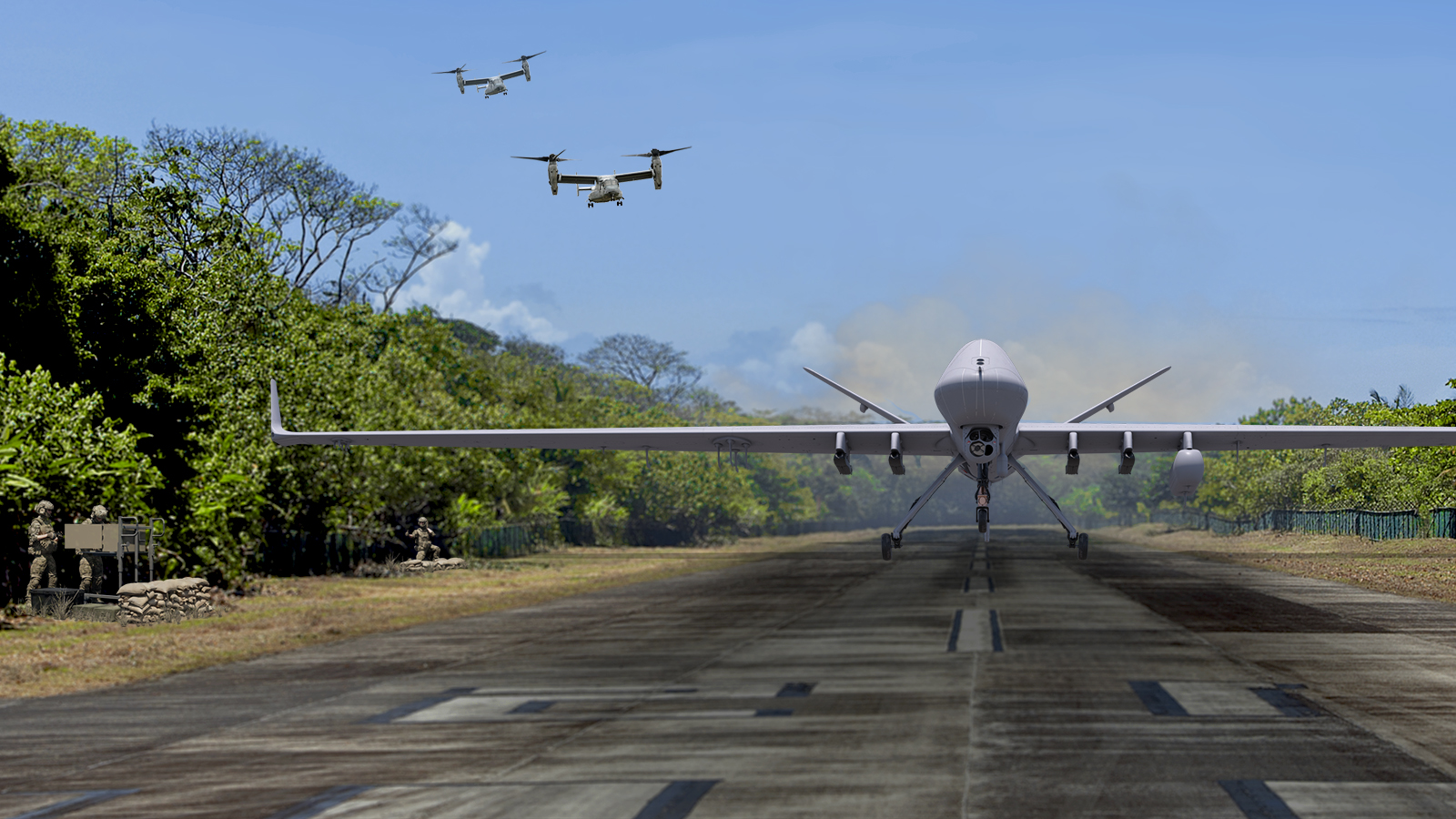
With its all-weather, all-domain capabilities, the next-gen MQ-9B UAS is a force multiplier for expeditionary ops.
MQ-9B might take off from allied Base A and fly a mission for several hours. Then it might land at Base B to refuel and rearm or change its mission profile, perhaps taking on a surface search radar to carry under its fuselage. The aircraft could take off and fly a mission over the ocean and then be recovered at Base C, and so on. With a huge number of places that can accommodate the aircraft, adversaries can’t predict where it might fly next.
These and other features have inspired great interest in MQ-9B aircraft among U.S. and other military services around the world. U.S. Air Force Special Operations Command is beginning to operate them as is the U.K.’s Royal Air Force. The U.S. Navy has validated numerous aircraft capabilities in tests off the West Coast of the United States, including strike group escort, communications relay, anti-submarine warfare, and more.
Other users have recorded more than tens of thousands of hours of operational use with MQ-9B in maritime domain awareness, humanitarian assistance, and counter-piracy missions. Even though the aircraft are new and only starting to enter service, they are getting heavy use and operators are using them in novel and imaginative ways, not unlike the Marine Corps.
The Japan Coast Guard, for example, recently used one of its MQ-9B SeaGuardian aircraft to detect the eruption of an underwater volcano — which then allowed officials to issue a warning to mariners to keep clear of the dangers in that area.
The Indian Navy, meanwhile, has relied on MQ-9B as it has expanded its patrol and maritime security awareness throughout the Indian Ocean. These aircraft have enabled important responses, including a case in which the Indian Navy rescued a number of mariners who had been imprisoned when their ship was hijacked by pirates. MQ-9B provided nonstop overwatch for the navy response, which culminated with an operation where special operations troops parachuted onto the ship to free the hostages.
MQ-9B enabled commanders to watch this and other missions live, in real time, from their ops room.
Important as all these developments are, adoption of the MQ-9 platform is just getting started. Although work is underway around the world, one of the most important new chapters for this platform will be the one written by the U.S. Marine Corps.

